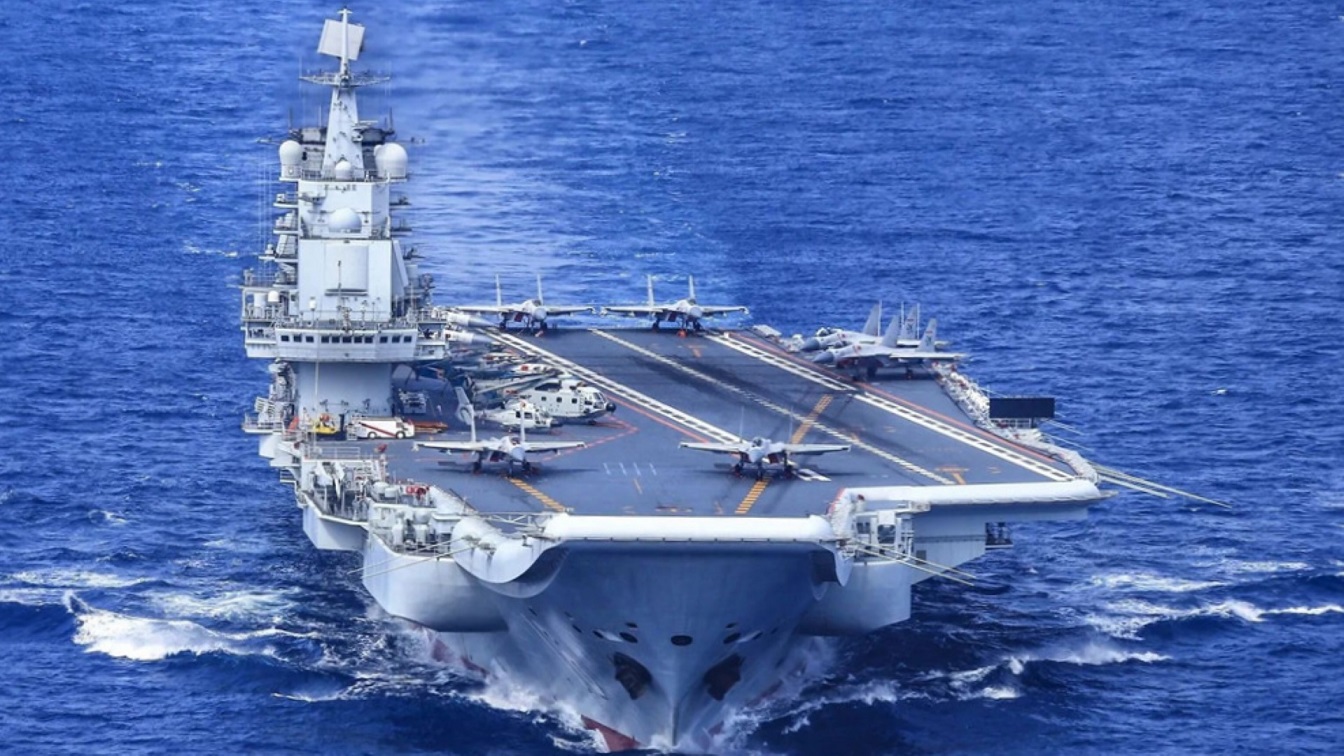This week, the People’s Liberation Army Navy (PLAN) took a bold step when it sailed one of its three aircraft carriers near the U.S. territory of Guam.
(Subscribe to Our YouTube Channel Here. Check out More 19FortyFive Videos Here)
The Chinese carrier strike group, led by the flattop Liaoning, had conducted training exercises in the Western Pacific near the Japanese island of Okinawa last week, which is also home to a major U.S. military presence.
During the exercises, the carrier conducted some 260 takeoff and landing drills – which forced the Japanese Air Force to scramble its own fighter jets and helicopters in response.
The PLAN flotilla consists of the Liaoning, the Type 055 large missile destroyer Wuxi, the Type 052D destroyer Chengdu, the Type 054A frigate Zaoshuang, and the Type 901 comprehensive replenishment ship Hulunhu.
The Chinese warships sailed near the remote Okinawa Prefecture islands of Okidaito and Kitadaito, as well as near Okinotorishima, the southernmost part of Japan.
Chinese Deployment
According to Radio Free Asia, the carriers and its escort were about 618 km (384 miles) northwest of Guam earlier this week, before returning to the waters between Taiwan and Japan. Beijing was quick to announce that the carrier force had never sailed so close to U.S. territory before – although the carrier had approached the island in response to U.S. military exercises with its allies in the region in 2019.
The U.S. Navy’s 7th Fleet, which is responsible for operations in the region, has not responded to the deployment of the China warships to the Western Pacific.
However, the move has been seen to punctuate a year of increased tensions between Beijing and Washington.
The Biden Administration had expressed outrage over China’s continued national security crackdown on Hong Kong, the former British colony and current semi-independent economic zone.
Some experts have suggested that China’s attempt to assimilate Hong Kong is essentially a “test run” for similar moves on other territories it considers its own.
That would, of course, include Taiwan – the self-ruling island that has never been under the control of the People’s Republic of China – which Beijing maintains is a breakaway province.
The Chinese Communist Party has viewed the island nation as critical to its legitimacy, and Beijing expressed outrage over U.S. House Speaker Nancy Pelosi’s visit in August.
The U.S., which strongly supports the government in Taipei, has regularly deployed warships to the region, and that has included transits of the Taiwanese Strait – much to the ire of Beijing.
This week’s deployment was likely in response to that support.
At the same time, also a significant show of force as Guam is home to the United States Air Force bases that host strategic bombers, while the island is also home to United States Navy nuclear-powered submarines.
The island is considered an important node in the second island chain that is designed to contain China.
China now appears to show a resolve to break that chain and prove to the world that it is a true naval superpower.
MORE: Putin Will Flip – Ukraine Is Getting Patriot Missiles
MORE: Could India and China Be Headed for War?
Author Experience and Expertise: A Senior Editor for 19FortyFive, Peter Suciu is a Michigan-based writer. He has contributed to more than four dozen magazines, newspapers, and websites with over 3,200 published pieces over a twenty-year career in journalism. He regularly writes about military hardware, firearms history, cybersecurity, politics, and international affairs. Peter is also a Contributing Writer for Forbes and Clearance Jobs. You can follow him on Twitter: @PeterSuciu.

